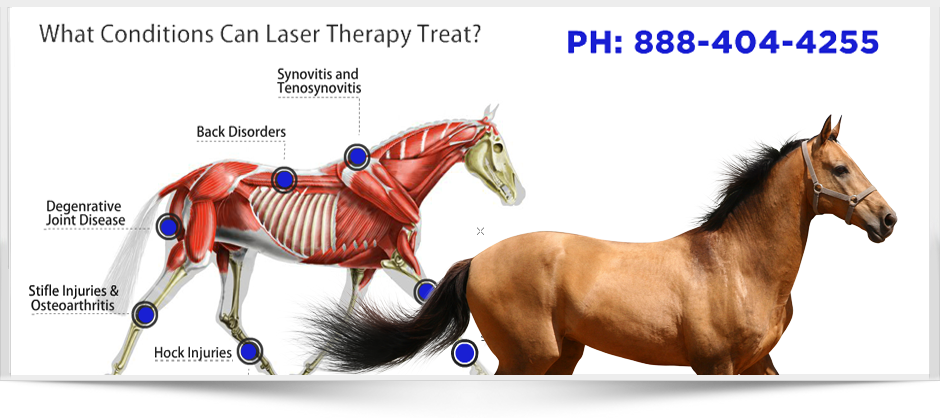Equine Therapy Success Stories: Genuine Individuals, Actual Emotional Improvements
Equine Therapy Success Stories: Genuine Individuals, Actual Emotional Improvements
Blog Article
Laser Therapy in Horse Therapy: A Modern Approach to Improving Horse Health
Laser therapy has become a crucial technique in equine treatment, utilizing focused light power to cultivate mobile repair and accelerate healing from a selection of disorders. This non-invasive approach is particularly effective in handling bone and joint injuries, injuries, and inflammatory conditions, considerably boosting general steed wellness. By stimulating mitochondrial task and increasing ATP manufacturing, laser therapy not just improves flow however additionally supplies significant pain relief. As this ingenious treatment continues to get grip, it opens up fascinating opportunities for attending to persistent conditions like arthritis and hoof issues, signifying a transformative shift in vet treatment. What makes this method specifically compelling?
Understanding Laser Therapy
Laser therapy, a non-invasive treatment technique, has gotten considerable grip in equine medicine due to its effectiveness in promoting recovery and pain relief. Boosted ATP degrees speed up cells repair service processes and minimize inflammation, making laser therapy particularly reliable for treating musculoskeletal injuries, injuries, and various other inflammatory problems in equines.
There are a number of sorts of lasers utilized in equine treatment, each with certain wavelengths and power outputs tailored to various restorative needs. Low-level laser treatment (LLLT), also referred to as chilly laser treatment, utilizes lower power degrees to stimulate cell feature without triggering thermal damage. High-intensity laser treatment (HANDLE), on the other hand, makes use of greater power degrees to attain deeper cells infiltration and even more substantial restorative effects.
Veterinarians use different laser tools and techniques depending upon the condition being treated and the preferred depth of tissue penetration. Proper training and proficiency are essential for making sure the risk-free and effective application of laser therapy, thus maximizing its restorative possibility while minimizing risks.
Benefits for Horse Health And Wellness
With a solid understanding of exactly how laser therapy works, it is crucial to explore its numerous advantages for equine wellness. By promoting mobile feature, laser treatment promotes faster injury recovery and aids in the regrowth of damaged tissues.
In addition, laser treatment has actually been revealed to improve circulation, therefore boosting blood circulation to affected locations. Boosted flow makes certain that essential nutrients and oxygen are supplied much more effectively, facilitating the recovery procedure. Furthermore, laser therapy's anti-inflammatory effects assist in decreasing swelling and pain, which is vital for the overall health of the equine.
Pain administration is another significant benefit. By releasing endorphins and obstructing discomfort signals, laser therapy provides effective, non-invasive relief from both severe and chronic pain. This can add to boosted wheelchair and lifestyle for the pet.
Last but not least, laser therapy is a non-invasive treatment choice, lessening the risk of complications related to even more intrusive treatments. Its Get More Information versatility and effectiveness make it an indispensable device in modern-day horse vet medication.
Common Problems Dealt With

One more widespread problem treated with laser treatment is joint inflammation. Steeds struggling with both acute and chronic joint inflammation benefit from the anti-inflammatory results of laser therapy, which assists to alleviate discomfort and enhance joint feature. Furthermore, laser therapy is employed in the management of wounds. Whether handling medical lacerations or stressful injuries, the technique promotes quicker tissue fixing and decreases the threat of infection.
Horse breathing conditions, such as frequent respiratory tract blockage (RAO), additionally react favorably to laser therapy. Laser treatment is valuable in treating unguis problems, consisting of laminitis and abscesses.
Procedure and Safety
Applying laser treatment in equine treatment involves a precise procedure to make certain both effectiveness and security. Equine Therapy. The procedure begins with a comprehensive veterinary evaluation to establish the suitability of laser treatment for the horse's certain condition. Once considered appropriate, the treatment location is prepared by cleaning and, if needed, clipping the hair to enhance laser penetration
The practitioner has to choose the appropriate kind you could try this out of laser, usually a low-level laser (LLLT) or a high-power laser (HPL), relying on the condition being dealt with. The laser device is then adjusted to the suitable wavelength, power, and duration settings. During the application, the expert moves the laser over the targeted area in a methodical fashion, ensuring constant and even exposure.
Safety procedures are strictly stuck to, including using safety eyewear for both the specialist and the steed. In addition, it is critical to check the horse for any type of indicators of pain or damaging reactions throughout the procedure. Post-treatment, the equine is usually offered a period of remainder to allow the restorative impacts to materialize.

Future of Horse Laser Treatment
As improvements in vet medication proceed to unfold, the future of equine laser therapy holds significant guarantee. Arising technologies and much deeper scientific insights are readied to refine and expand the applications of laser treatment for horses. One of the most awaited advancements is the integration of advanced imaging techniques that enable for extra exact targeting of damaged tissues, thus enhancing therapeutic outcomes. Furthermore, the growth of mobile and easy to use laser tools is likely to make this treatment extra obtainable to a wider series of specialists and horse proprietors.
Moreover, continuous research into the molecular and cellular mechanisms of laser treatment will likely generate enhanced methods tailored to certain problems, improving efficiency and minimizing treatment times. Customized therapy strategies based upon genetic and biochemical pens can come true, ensuring that each equine receives the most appropriate and reliable treatment.
Furthermore, governing advancements and standardization of protocols will certainly boost the integrity and dependability of laser treatment in equine method. Equine Therapy. As these developments continue to emerge, equine laser treatment is poised to end up being an essential element of veterinary treatment, offering enhanced recovery and enhanced lifestyle for horses worldwide
Conclusion

Report this page